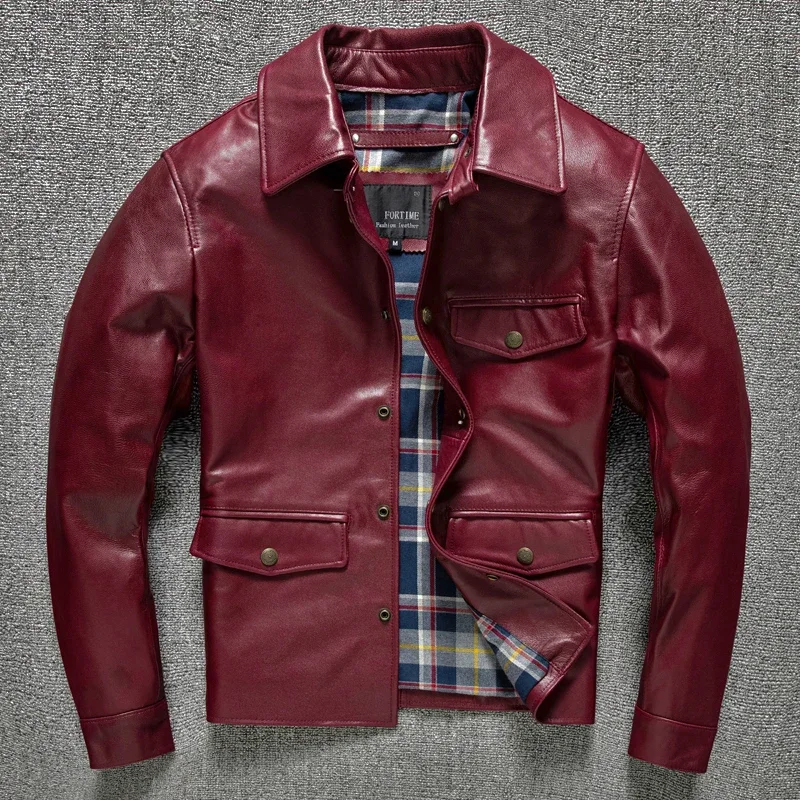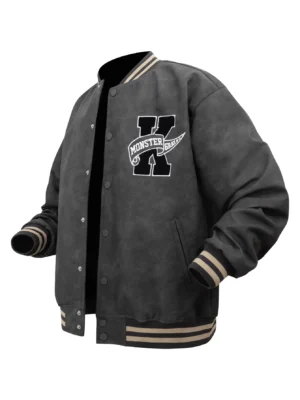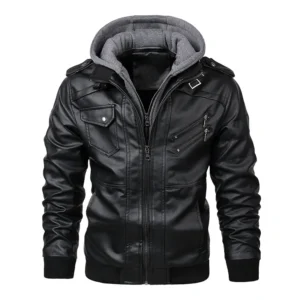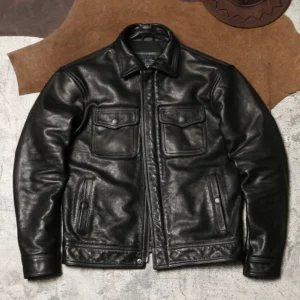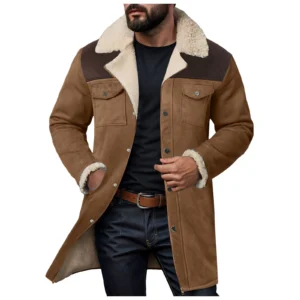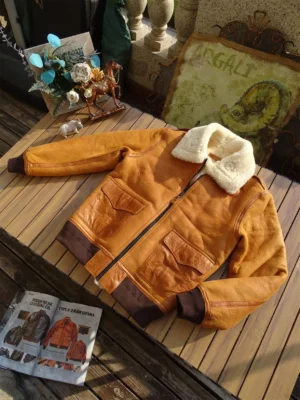Introduction to Shearling and Sheepskin
When shopping for premium winter outerwear, you’ll often encounter the terms “shearling” and “sheepskin” used in product descriptions. These materials are frequently confused or used interchangeably, but understanding their distinct characteristics is essential for making informed purchasing decisions.
The differences between these materials impact everything from warmth and comfort to longevity and care requirements. While both materials originate from sheep, they possess unique qualities that make them suitable for different outerwear applications.
In this comprehensive comparison, we’ll explore:
– The fundamental differences between shearling and sheepskin
– How each material is sourced and processed
– Their distinct characteristics and performance benefits
– Which material might best suit your specific needs and preferences
This knowledge proves especially valuable when investing in premium outerwear, where material quality directly influences both performance and longevity. A deeper understanding of shearling vs sheepskin comprehensive guide helps ensure your investment meets your expectations in both comfort and style.
Shearling vs. Sheepskin: Essential Differences at a Glance
Before diving into detailed explanations, let’s highlight the key differences between shearling and sheepskin in a simple comparison:
| Characteristic | Shearling | Sheepskin |
|---|---|---|
| Source | Young lamb (shorn only once) | Sheep of any age |
| Processing | Tanned with wool intact, uniformly shorn | Various methods (with or without wool) |
| Texture | Exceptionally soft, supple suede with plush wool | Varies from soft to robust, depending on processing |
| Warmth | Superior warmth-to-weight ratio, excellent insulation | Very good insulation, typically heavier |
| Common Uses | Luxury coats, jackets, collars, and linings | Diverse applications from outerwear to rugs |
| Relative Cost | Higher (premium material) | Variable (depends on quality and processing) |
Understanding these differences is crucial when selecting outerwear that meets your specific needs. While both materials offer excellent warmth and comfort, they serve slightly different purposes based on their unique properties.
These distinctions become particularly important when considering different winter weather conditions and style preferences. The choice between shearling and sheepskin can significantly impact both the performance and appearance of your winter wear options.
What is Sheepskin? The Complete Definition
Sheepskin is the hide of a sheep that has been tanned and processed with or without its wool intact. This versatile material appears in numerous products across various industries, from fashion to medical applications.
The term “sheepskin” encompasses two main variations:
– Wool-on sheepskin: The hide is tanned with the natural wool still attached
– Sheepskin leather: The wool is removed during processing, resulting in smooth leather
Sheepskin offers several natural properties that make it highly desirable:
– Exceptional durability and resilience
– Natural insulation that maintains body temperature
– Moisture-wicking abilities that keep skin dry
– Inherent antibacterial properties
– Remarkable breathability despite its insulating qualities
Its versatility allows sheepskin to appear in diverse applications beyond outerwear, including rugs, car seat covers, medical products (especially for pressure relief), and home goods. The material’s natural breathability and temperature-regulating properties make it particularly valuable for products that contact the skin directly.
Many people wonder are sheepskin and shearling same when shopping for winter outerwear. While related, they serve different purposes and offer distinct benefits, as we’ll explore further. For those specifically interested in sheepskin options, exploring high-quality men’s sheepskin coat selections can provide practical examples of how this material appears in premium outerwear.
Understanding Shearling: A Premium Specialized Sheepskin
Shearling represents a specialized, premium category of sheepskin with distinct characteristics. True shearling comes specifically from young lambs that have been shorn only once, resulting in a material with exceptional qualities not found in standard sheepskin.
The defining characteristic of authentic shearling is its production method. The hide of a young lamb is carefully tanned with the wool still attached, then the wool is uniformly trimmed to a consistent length. This creates shearling’s signature dual-sided nature: a soft suede exterior and a plush wool interior, both connected as a single material.
What makes shearling particularly special:
– Exceptional softness due to the younger source animal’s finer wool fibers
– Superior suppleness that allows for more flexible, comfortable garments
– Unmatched insulation properties with minimal weight
– Natural moisture-wicking abilities that keep you dry and comfortable
– Luxurious appearance and feel that improve with proper care
It’s important to understand that while all shearling is sheepskin, not all sheepskin is shearling. The distinction lies in the specific source (young lamb) and processing method that creates shearling’s distinctive properties.
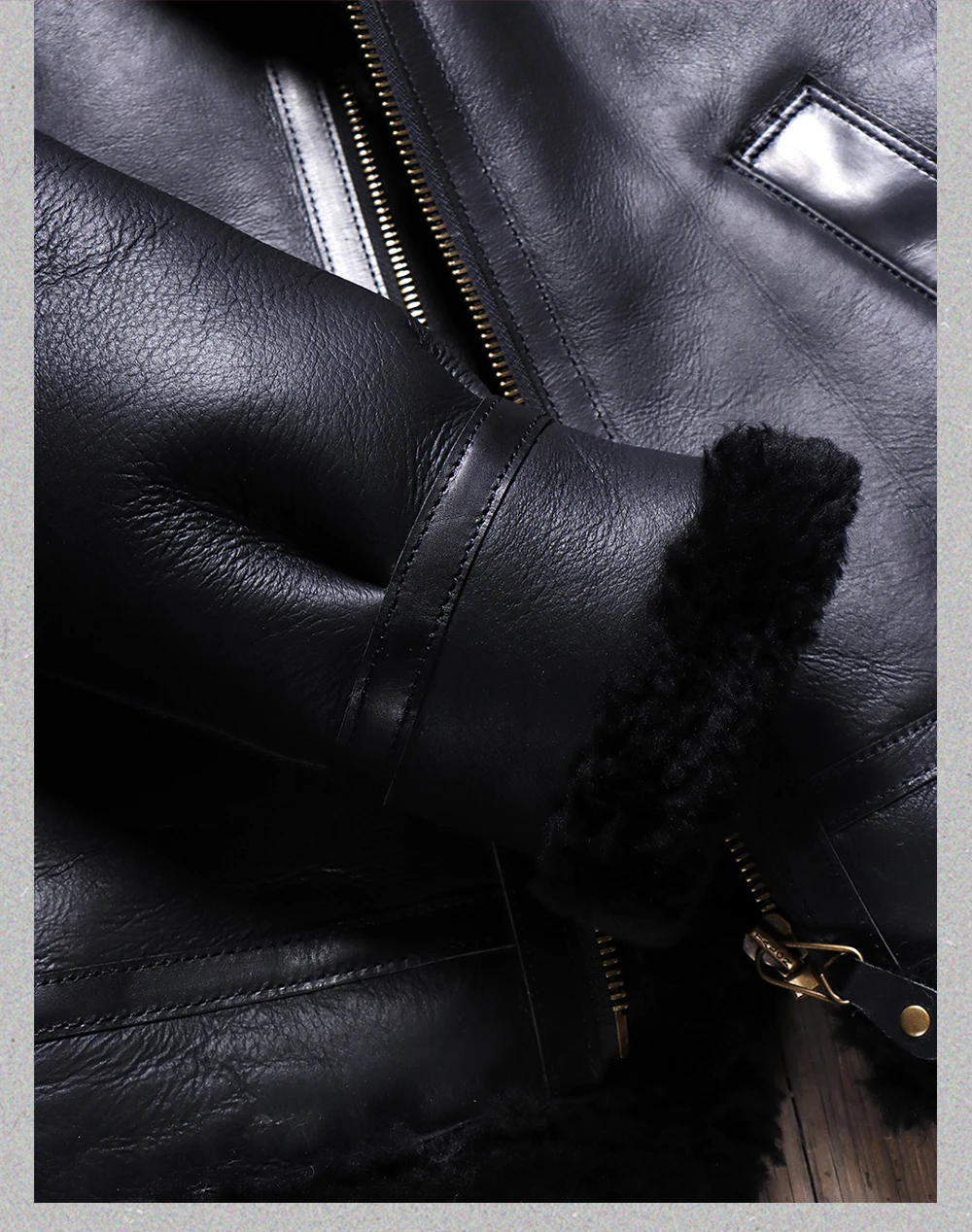
For those seeking premium outerwear, exploring men’s shearling coat options demonstrates how this luxury material translates into sophisticated garments that combine warmth with refined style.
Source and Age: Young Lamb vs. Mature Sheep
One of the fundamental differences between shearling and sheepskin lies in the source animal’s age. This distinction significantly impacts the resulting material’s quality, texture, and performance characteristics.
Shearling comes exclusively from young lambs that have been shorn only once. These younger animals naturally produce finer, softer wool fibers with exceptional flexibility. The skin itself remains more supple and delicate compared to mature sheep. This combination creates shearling’s characteristic luxurious feel and superior drape when crafted into garments.
In contrast, standard sheepskin can come from sheep of virtually any age. Mature sheep typically develop:
– Coarser, thicker wool fibers
– More robust, thicker hide
– Greater variation in wool density and texture
These age-related differences manifest in the finished materials. Shearling consistently offers exceptional softness, lightweight warmth, and a uniform appearance. Sheepskin provides greater variation in texture and weight, often with increased durability but less uniform softness.
For consumers, these distinctions matter significantly when selecting premium outerwear. Understanding how to tell if a jacket is shearling or sheepskin helps ensure you select the material that best meets your specific needs and preferences.
Processing Methods and Finishing Techniques
The transformation from raw animal hide to finished luxury material involves distinct processes for shearling and sheepskin, resulting in their unique characteristics.
Shearling Processing
The production of premium shearling follows several critical steps:
- Initial preparation: The hide from a young lamb is carefully cleaned and prepared for tanning
- Tanning with wool intact: The hide undergoes specialized tanning that preserves the natural connection between wool and skin
- Precise wool trimming: The wool is shorn to a uniform length (typically between 1/2 to 1 inch)
- Suede finishing: The skin side is finished to create a soft, velvety suede texture
- Final conditioning: Special treatments enhance softness and suppleness
This meticulous process preserves the natural insulation properties while creating shearling’s characteristic dual-sided nature—suede on one side, plush wool on the other.
Sheepskin Processing
Sheepskin processing offers greater variation:
- Wool-on processing: Similar to shearling but often with less precision in wool length uniformity
- Wool-off processing: The wool is completely removed to create sheepskin leather
- Various finishing techniques: From natural appearances to highly refined finishes
- Optional treatments: Water resistance, softening, or other property enhancements
The diversity in sheepskin processing creates greater variation in the finished material’s appearance, texture, and performance characteristics.
Both materials benefit from traditional craftsmanship combined with modern technologies, with premium versions requiring substantial expertise to create. For those interested in the finest examples of these materials in menswear, exploring men’s leather shearling coats demonstrates how these processing techniques translate into exceptional garments.
Material Characteristics: Texture, Weight, and Appearance
The distinct processing methods for shearling and sheepskin result in materials with noticeably different sensory qualities that impact both appearance and comfort.
Texture Distinctions
Shearling offers an unmistakable textural experience. Its suede exterior provides a velvety softness to the touch, while the interior wool delivers plush comfort against the skin. The younger source animal contributes to wool fibers that feel exceptionally soft and fine, creating a luxurious tactile experience.
Sheepskin presents greater textural variation. Wool-on varieties can range from soft to slightly coarser depending on the source animal’s age and wool type. Sheepskin leather (without wool) typically offers a substantial yet supple hand feel with its own distinctive texture.
Weight Considerations
Authentic shearling achieves remarkable warmth with minimal weight. This exceptional warmth-to-weight ratio makes it ideal for garments that require serious insulation without bulk or heaviness. The material drapes beautifully and moves naturally with the wearer.
Traditional sheepskin tends to be somewhat heavier, particularly in wool-on versions with longer or denser wool. This additional weight can provide substantial warmth but may affect garment mobility and drape differently than lighter shearling.
Visual Appearance
Visually, shearling presents a refined, uniform appearance. The precisely trimmed wool creates an even, consistent look, while the suede exterior offers a sophisticated matte finish. Premium shearling garments often feature the wool as subtle accents at collars, cuffs, or interior linings.
Sheepskin’s appearance varies more widely based on processing methods. Wool-on varieties may have less uniformity in wool length and density, while sheepskin leather showcases natural grain patterns and textures unique to each hide.
These sensory differences significantly influence how garments look, feel, and wear over time. When considering investment pieces, understanding the luxury outerwear differences between sheepskin and shearling helps ensure selections that meet both aesthetic and performance expectations.
Insulation and Warmth Properties
Both shearling and sheepskin offer exceptional insulation, but their thermal properties differ in ways that impact their suitability for various weather conditions and activities.
Shearling’s remarkable insulation comes from its unique structure. The wool fibers create millions of tiny air pockets that trap body heat while allowing moisture vapor to escape. This combination delivers exceptional warmth even in extremely cold conditions without the risk of overheating during activity. The consistent wool length and density in quality shearling provides reliable, uniform insulation throughout the garment.
Sheepskin provides substantial warmth through similar mechanisms but often with greater variation in insulation distribution. The potentially longer wool fibers in some sheepskin varieties can offer excellent protection against harsh winds and extreme cold, though sometimes with less even heat distribution than precision-trimmed shearling.
Both materials excel in natural temperature regulation through:
– Moisture management that keeps skin dry
– Breathability that prevents overheating
– Natural insulation that adjusts to body temperature
– Wind resistance without requiring additional barriers
Where they particularly differ is in weight efficiency. Shearling typically provides more warmth per ounce of material weight, making it ideal for activities requiring both serious protection and freedom of movement. Standard sheepskin offers excellent insulation but may require slightly more material bulk to achieve comparable warmth levels.
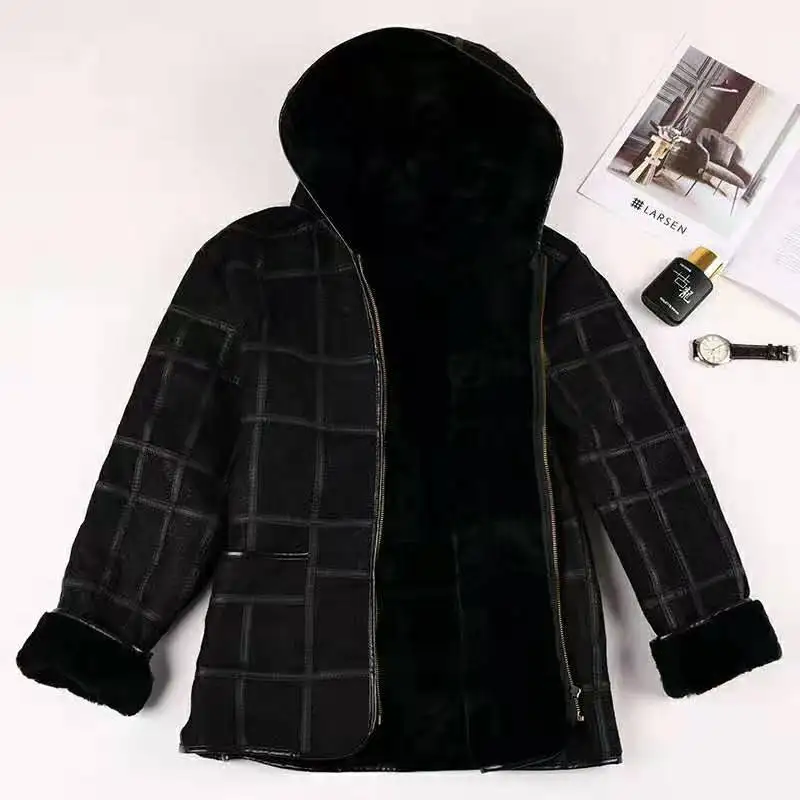
For those facing severe winter conditions, understanding these thermal differences helps in selecting appropriate protection. A deeper dive into the winter warmth comparison between shearling and sheepskin can provide additional guidance for specific cold-weather scenarios.
Durability, Longevity, and Care Requirements
Investing in premium outerwear made from natural materials requires understanding the long-term care needed to maintain their quality and appearance.
Durability Factors
Shearling offers excellent durability when properly maintained, though its more delicate nature requires careful handling. Its greatest vulnerability comes from moisture exposure, which can affect both the suede exterior and the wool interior if not properly protected or dried.
Sheepskin generally demonstrates robust durability, particularly in leather-finished varieties. Wool-on sheepskin withstands regular use well, though it may show wear patterns in high-friction areas over time. Both materials can last for many years with appropriate care.
Care Guidelines for Both Materials
For both shearling and sheepskin:
– Avoid prolonged direct sunlight, which can dry and fade the material
– Store on wide, padded hangers to maintain shape
– Allow adequate ventilation during storage
– Gently brush wool fibers regularly to maintain loft
– Address spills or stains immediately
– Consider professional cleaning for significant soiling
Specific Shearling Care
Shearling requires particular attention:
– Keep away from sustained moisture exposure
– Use specialized shearling-safe water repellent
– Clean suede side with gentle brushing
– Spot clean with specialized shearling cleaner only
– Professional cleaning recommended for complete care
Sheepskin Maintenance
For sheepskin care:
– Brush wool regularly in natural growth direction
– Use sheepskin-specific detergent for cleaning
– Air dry naturally away from heat sources
– Consider lanolin replenishment for older items
– Follow specific manufacturer guidelines for leather-finished sheepskin
With proper care, both materials develop character while maintaining their functional properties. The rich history of these materials in premium outerwear, particularly the complete history of aviator shearling jackets, demonstrates their remarkable longevity when properly maintained.
Applications in Premium Men’s Outerwear
The distinct properties of shearling and sheepskin create different opportunities for application in premium men’s outerwear, each material lending itself to specific styles and functions.
Shearling’s luxurious combination of light weight and exceptional warmth makes it ideal for sophisticated outerwear that doesn’t sacrifice comfort for style. In premium men’s collections, shearling typically appears in:
- Aviation-inspired bomber jackets with shearling collars
- Full shearling coats with suede exteriors and plush wool linings
- Designer peacoats with shearling collars and cuffs
- Luxury casual jackets that showcase both the suede and wool aspects
These garments benefit from shearling’s natural insulation while maintaining a refined silhouette without excessive bulk.
Traditional sheepskin finds its place in various outerwear applications:
– Rugged outdoor coats designed for extreme weather
– Classic ranch coats with substantial warmth
– Casual jackets with visible wool trim
– Versatile three-season coats with moderate insulation
The adaptability of sheepskin allows designers to create everything from robust outdoor gear to sophisticated urban wear. Its versatility in processing creates opportunities for diverse textures and finishes.
Mens Leather Coat, Mens Long Leather Coat
Price range: $225.22 through $235.58 Select options This product has multiple variants. The options may be chosen on the product pageMens Black Leather Coat, Mens Leather Coat
Price range: $181.52 through $197.20 Select options This product has multiple variants. The options may be chosen on the product pageMens Brown Leather Coat, Mens Leather Coat
$846.94 Select options This product has multiple variants. The options may be chosen on the product pageMens Shearling Coat, Mens Sheepskin Coat
$888.08 Select options This product has multiple variants. The options may be chosen on the product page- Price range: $96.28 through $130.88 Select options This product has multiple variants. The options may be chosen on the product page
Mens Shearling Coat, Mens Sheepskin Coat
$2,257.19 Select options This product has multiple variants. The options may be chosen on the product page
Both materials have deeply established places in menswear traditions, with designs that reference historical styles while incorporating modern tailoring techniques. The enduring appeal of these natural materials speaks to their unique combination of functionality and aesthetic value.
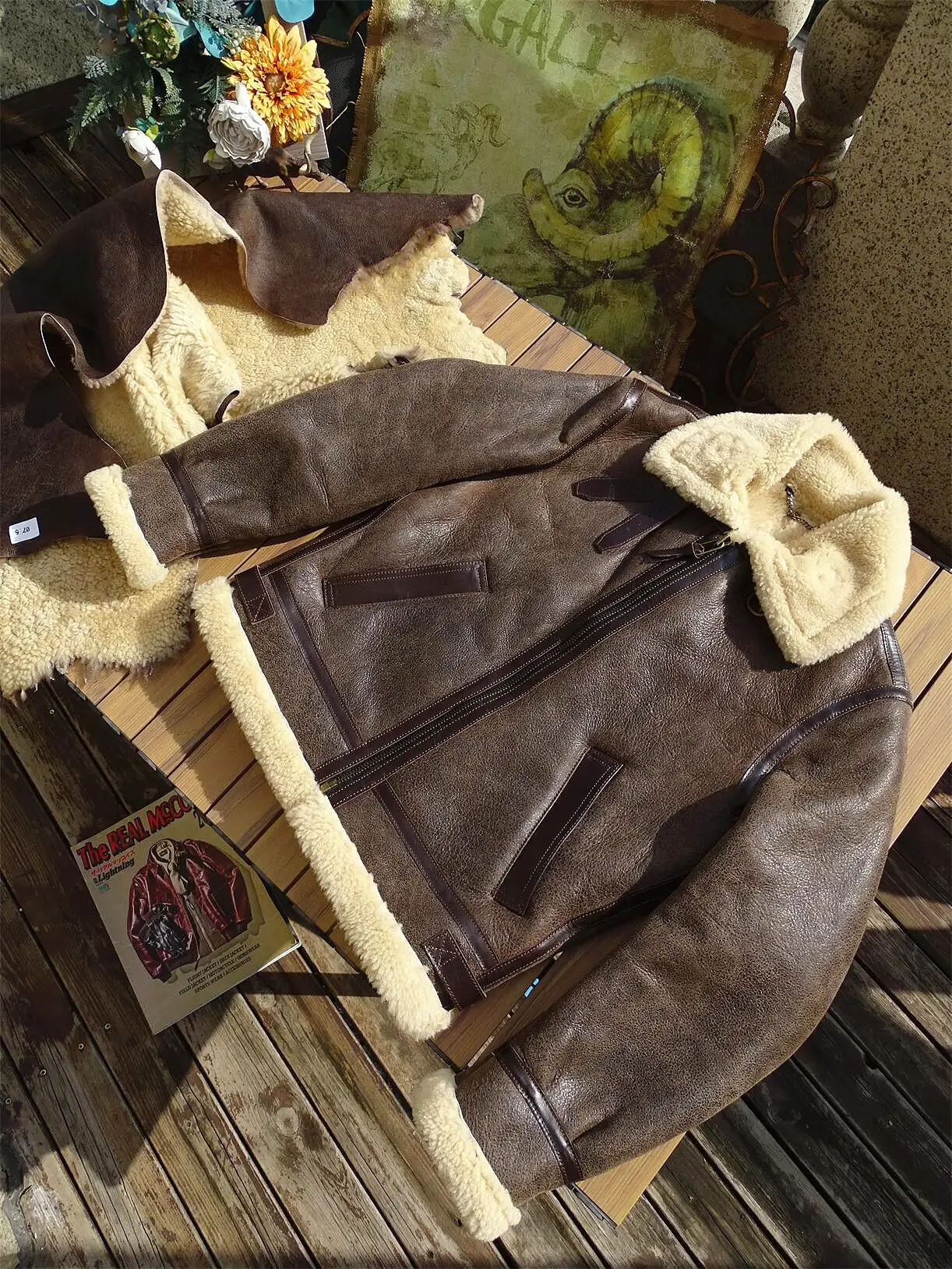
For those seeking versatile options beyond specialized shearling pieces, exploring broader men’s leather coat collections provides additional style choices that incorporate these premium materials in different ways.
Quality Assessment: How to Identify Superior Materials
Identifying high-quality shearling and sheepskin requires attention to specific characteristics that indicate superior materials and craftsmanship.
Evaluating Shearling Quality
When assessing shearling quality, look for:
- Wool density and evenness: Premium shearling has consistent, dense wool without thin patches
- Wool softness: The wool should feel exceptionally soft against skin without scratchiness
- Suede texture: The exterior should have a uniform, velvety feel without rough areas
- Pliability: Quality shearling remains supple and flexible, not stiff or rigid
- Color consistency: The material should show even coloration throughout
- Seam construction: Examine how edges are finished where shearling pieces join
Superior shearling has a substantial but not heavy feel, with wool that springs back when compressed and suede that shows minimal marking when gently scratched.
Recognizing Quality Sheepskin
For quality sheepskin, examine:
- Hide thickness: Look for consistent thickness throughout
- Wool characteristics: In wool-on varieties, assess density, length uniformity, and softness
- Leather quality: The leather should be supple yet sturdy without obvious flaws
- Finish consistency: Check for even coloration and texture
- Edge finishing: Well-crafted edges indicate overall quality
- Natural characteristics: Some natural variation indicates authentic material
In finished garments, quality indicators include clean, strong stitching, thoughtful design that works with the material’s natural properties, and attention to detail in collars, cuffs, and closures.
Avoid materials that feel artificially stiff, have inconsistent wool density, or show signs of poor finishing like rough edges or uneven dye. When investing in premium outerwear, these quality assessments help ensure you receive genuine value for your investment.
For styling guidance once you’ve selected quality materials, explore the classic shearling jacket styling guide for timeless approaches to wearing these investment pieces.
Investment Value: Cost Considerations and Quality Return
Premium shearling and high-quality sheepskin represent significant investments compared to synthetic alternatives, but their long-term value often justifies the initial cost for discerning buyers.
Shearling commands higher prices due to several factors:
– Limited supply of appropriate young lamb hides
– Labor-intensive processing requiring specialized expertise
– Meticulous wool trimming and finishing procedures
– Superior insulation and comfort properties
– Luxury positioning in the market
Quality sheepskin, while generally more accessible than premium shearling, still represents an investment purchase. The price varies widely based on processing methods, wool quality, and finish characteristics.
The investment value of both materials becomes apparent through:
- Longevity: With proper care, both materials can last for many years or even decades
- Consistent performance: Their insulation and comfort properties remain stable over time
- Timeless appeal: Classic styles avoid the obsolescence of trendy alternatives
- Wear comfort: The exceptional comfort makes them items you’ll reach for consistently
- Developing character: Unlike synthetics, natural materials often improve aesthetically with proper use
When considering cost-per-wear calculations, premium natural materials often prove economical despite higher initial prices. Their durability, combined with timeless styling, creates pieces that remain functional and relevant season after season.
For those weighing options between these premium materials, understanding the specific benefits of each helps determine which represents the better investment for individual needs. The comprehensive winter choice guide between shearling and sheepskin offers additional insights for making this important decision.
Is Synthetic Shearling a Viable Alternative?
As interest in animal-free alternatives grows, many wonder whether synthetic shearling and sheepskin options can provide similar benefits to their natural counterparts.
Synthetic alternatives (sometimes called “faux shearling” or “sherpa”) typically consist of polyester, acrylic, or modacrylic fibers designed to mimic the appearance and texture of natural materials. These options have both advantages and limitations compared to genuine shearling and sheepskin.
Performance comparison:
– Warmth: Synthetics provide good insulation but typically lack the temperature-regulating properties of natural wool
– Breathability: Most synthetic options offer less breathability, potentially creating moisture buildup during activity
– Durability: Quality varies widely, with premium synthetics offering good longevity but often showing wear differently than natural materials
– Feel: Modern synthetics can closely approximate the softness of natural materials, though discerning users may notice differences in texture and weight
Appropriate applications:
Synthetic alternatives may be suitable for:
– Casual or occasional wear items
– Style-focused pieces where performance is secondary
– Situations where water exposure is frequent
– Those with specific ethical preferences regarding animal products
Recent advancements in textile technology continue to improve synthetic options, with higher-end alternatives offering increasingly competitive performance. However, for premium outerwear designed for serious weather protection and long-term use, natural materials still generally offer superior overall performance.
How to Care for Your Shearling or Sheepskin Investment
Proper maintenance significantly extends the life and appearance of premium shearling and sheepskin outerwear. Following specific care protocols helps preserve their unique properties and appearance.
Essential Shearling Care
- Regular maintenance: Gently brush wool with a soft-bristled brush to maintain loft and remove dust
- Spot cleaning: Address spots immediately with a clean, damp cloth, blotting rather than rubbing
- Water protection: Apply specialized shearling protector spray before first wear and periodically thereafter
- Drying procedure: If dampened, blot with towels and dry at room temperature away from direct heat
- Professional cleaning: Seek specialists experienced with shearling for thorough cleaning
Sheepskin Care Essentials
- Brushing routine: Brush wool regularly in the direction of growth using an appropriate wool brush
- Cleaning approach: Use specialized sheepskin detergent diluted according to instructions
- Stain treatment: Address stains quickly with appropriate sheepskin cleaners
- Drying method: Always air dry naturally, never use machine drying or direct heat
- Storage: Store on padded hangers in breathable garment bags
Quick Response Solutions
For both materials:
– Liquid spills: Blot immediately, don’t rub
– Mud or dirt: Allow to dry completely, then brush gently
– Odor issues: Air outside on dry, breezy days (avoid direct sunlight)
– Minor abrasions: On suede surfaces, gently brush with a suede brush
With diligent care, premium shearling and sheepskin outerwear can maintain their beauty and functionality for many years, making them true investment pieces that improve with age.

